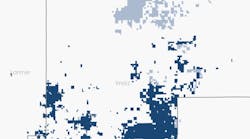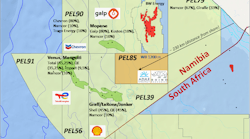The U.S. oil industry intensely disliked the former "windfall profits" tax not just because it was a tax but because it was a counterproductive tax.
However, one aspect of the tax lingers, and the oil industry isn't anxious to see it fade away.
When Congress repealed the tax in 1988 it did not remove a section that permitted operators a nonconventional fuels tax credit, currently valued at about 87 cents/Mcf, for coal seam gas.
That tax credit is due to expire at the end of the year. Any coal seam gas well drilled by then will be eligible for the credit through Jan. 1, 2001.
A SPARK FOR DRILLING
The credit has sparked a miniboom of coal seam drilling. The Jan. 1, 1991, deadline for qualifying has prompted operators to stake about 1,000 wells in the San Juan basin of New Mexico and 1,000 in the Black Warrior basin of Alabama.
In Alabama, there were 1,079 coal bed methane wells permitted last year, compared with only 990 in the previous 9 years. So far this year, 362 more were permitted through Mar. 19 vs. only 107 for the first 3 months of last year.
Operators also are hurrying to drill coal seam wells in other sections of the country--Southeast Kansas, for example (OGJ, Apr. 9, p. 70).
Meanwhile, oil lobbyists have begun a campaign to persuade key members of congressional tax writing committees to extend the tax credit as a rider to other tax legislation.
That's been done in the past, and last year a small group of oil companies and associations began lobbying for another extension.
They argued the tax credit is justified because in the early years coal seam wells produce lots of water but only small volumes of underpressured gas. Thus, they say, the sizable credit is needed for the ventures to be economic (OGJ, Oct. 9, 1989, p. 49).
Some oil companies not active in coal seam gas drilling would rather see Congress pass the Bush administration's proposed package of tax incentives (OGJ, Feb. 5, p. 28). But, just as last year, that appears to have little chance of passage.
And some congressional aides are questioning if the coal seam gas tax credit is a justifiable public expenditure.
STANDING ON ITS OWN
Vello Kuuskraa, chairman of ICF Resources Inc., Vienna, Va., told a Washington, D.C., energy seminar last week the provision has been "a very powerful" tax credit.
"We can be reasonably confident in saying that in the areas that have been developed, the credit had an economic justification," he said.
It accelerated the pace of drilling and development and encouraged operators to experiment with different technologies to produce gas from coal seams.
Kuuskraa said coal seam drilling eventually will need to stand on its own, "and our analysis is that it can."
Copyright 1990 Oil & Gas Journal. All Rights Reserved.

